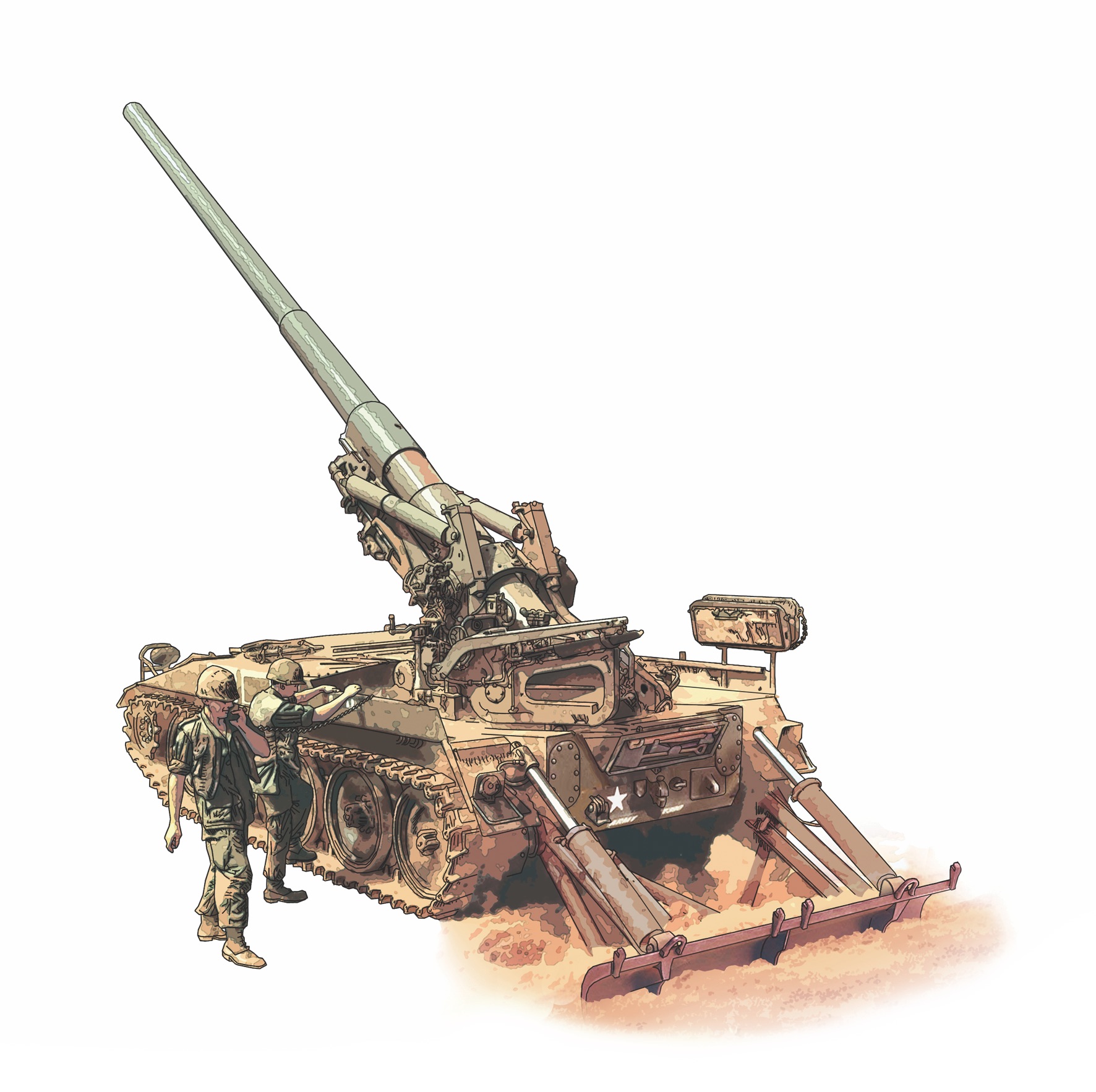On Feb. 22, 1967, the U.S. Army’s 2nd Battalion, 94th Field Artillery Regiment, fired its M107 175 mm guns across the Demilitarized Zone and into North Vietnam’s anti-aircraft artillery sites. The shelling, in response to an attack on a U.S. Air Force spotter aircraft, marked the first time U.S. ground forces aimed at targets inside North Vietnam. The battalion’s M107s were the war’s longest-range artillery pieces used by ground forces, exceeded only by the Navy’s 8- and 16-inch guns.
The M107, which entered production in 1963, arose from the desire for a family of artillery weapons that were self-propelled (drivable), transportable by air and based on the same chassis. The result was two systems: the M107 gun and M110 howitzer, with common features including the chassis, diesel engine propulsion, and elevation, train and loading mechanisms. They differed primarily in armament: The M107 had a 175 mm weapon, and the M110 had a 203 mm weapon, also known as the “8-inch howitzer.”
The two weapons could be swapped between chassis in less than 30 minutes. Their recoil and hydraulically controlled chassis bracing system made them stable firing platforms. Both used interrupted stepped-thread breech blocks and fired separate-loading ammunition. But the M107 suffered from high barrel wear and rapid bore erosion that affected accuracy at ranges beyond 17 miles and initially limited the barrel life to 300 rounds. By 1970 improved materials extended the life to 800-1,000 rounds.
The M107 was the only ground artillery piece that could knock out North Vietnamese M46 130 mm towed guns north of the DMZ and in Laos and Cambodia. It was the weapon of choice for firing on the Ho Chi Minh Trail. The M107 served with the U.S. Army and Marine Corps into the late 1970s and early ’80s. It was also exported to more than a dozen countries and remains in service with some armies to this day.
Propulsion: 405 horsepower super-charged diesel engine
Vehicle weight: 31 tons
Max speed: 50 mph
Vehicle range: 450 miles
Bore: 175 mm
Length: 34 ft.
Elevation (barrel vertical movement): Minus-5 degrees to plus-65 degrees
Traverse (horizontal movement): 30 degrees to left or right
Ammunition: high-explosive shells
Rate of fire (max): One round per minute
Shell range (max): 32,700 meters (20 miles)





